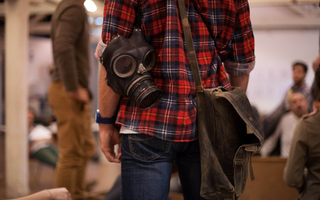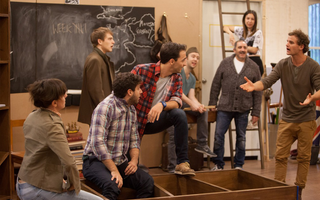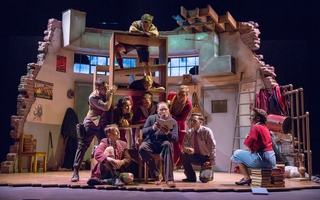- Some scholars have speculated that Henry V was the first play performed at the new Globe Theatre in 1599. The play was written in 1599 and contains a reference to the theatre as a ‘wooden O’, calling to mind the unique shape of the Globe. However, more recently this theory has been challenged, and some have argued that the play would have first been performed at the Curtain Theatre before later being performed at the Globe. The reference to a ‘wooden O’ might have come from an addition or rewriting of the opening speech for its performance at the new theatre.
- Shakespeare, like many writers, loved a bit of dramatic simplification and embellishment. The Dauphin, who in Shakespeare’s play is a single adversary to Henry, was historically actually three different people over the course of Henry’s life. Prince Louis died soon after the battle of Agincourt. Next came Louis’ brother John, who died suddenly and is rumoured to have been murdered by poisoning. Finally, Louis’ last remaining brother, Charles, who later became Charles VII of France.
- The real King Henry V ruled for only 9 years before dying at the age of 35 from an illness, supposedly dysentery. He is buried at Westminster Abbey, not far from the grave of King Richard II. After his death, Henry's infant son was crowned king at less than one year old, becoming Henry VI.
- By medieval standards, Henry was incredibly tall. The warrior king was purported to be 6’3” and kept his face clean-shaven and his dark hair cut short in a ring above his ears. Certainly an imposing figure to come face-to-face with in the heat of battle!
- In Act 5, Scene 2, Henry refers to “the poor and untempering effect of my visage”. This is likely a reference to a facial wound that he received at the Battle of Shrewsbury (Depicted in Shakespeare’s Henry IV). Raphael Holinshed recounts how Henry was struck in the face with an arrow, and although his comrades wanted to bear him off the battlefield, he refused to abandon his men or cause them to feel afraid, and so he continued to fight with the head of the arrow embedded in his face. It later had to be surgically removed.
- A huge number of the French troops who died in the Battle of Agincourt did not die from battle wounds. Rather, they were drowned or suffocated in the mud after being trampled in the crammed rush of battle, unable to get back up due to being crushed by other soldiers.
- Henry V is not the only Shakespeare play that features the character of Henry V. He appears as a younger prince Hal in the plays Henry IV Part 1 and Henry IV Part 2. In these plays, he is shown to be young and irresponsible, and to prefer the company of drunkards and thieves – most notably his good friend Falstaff. At the end of Henry IV Part 2, Henry disowns Falstaff and abandons his former way of life, before becoming the warlike leader that we meet in Henry V.
- Laurence Olivier's directorial film debut was a 1944 film of Henry V, which was part-funded by Winston Churchill's British Government, made towards the end of World War II. Churchill wanted the film to act as a morale boost for the English army, and the release coincided with England's invasion of Normandy in France. The film was originally dedicated to English troops. Now considered propaganda, the scriptwriters deliberately excluded sections that looked at Henry V in a less favourable light. At the time, Olivier's Henry V was believed to have been the most expensive British film to have ever been made.
- Renowned Shakespearean actor and director Kenneth Branagh chose Henry V as his first feature film, released in 1989. He played the title role and called upon a number of stars of film and Shakespeare to feature alongside him, including Brian Blessed, Judi Dench, Christian Bale, Derek Jacobi, Ian Holm and Emma Thompson. The film garnered Branagh Oscar nominations for Best Director and Best Actor, and won a swathe of awards, cementing his career in film.
- More recently, Henry V has been captured in The Hollow Crown with British actor Tom Hiddleston in the title role.





